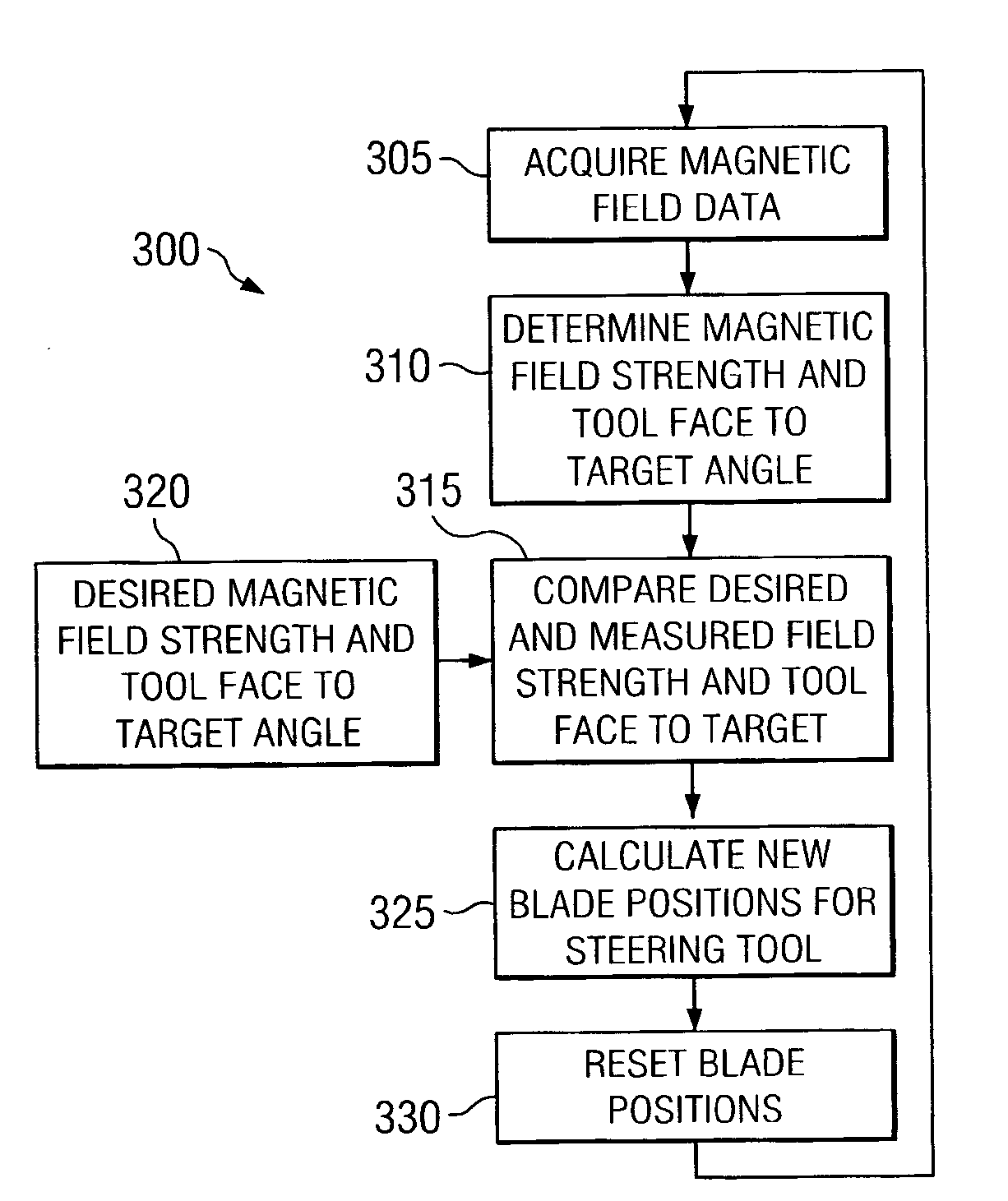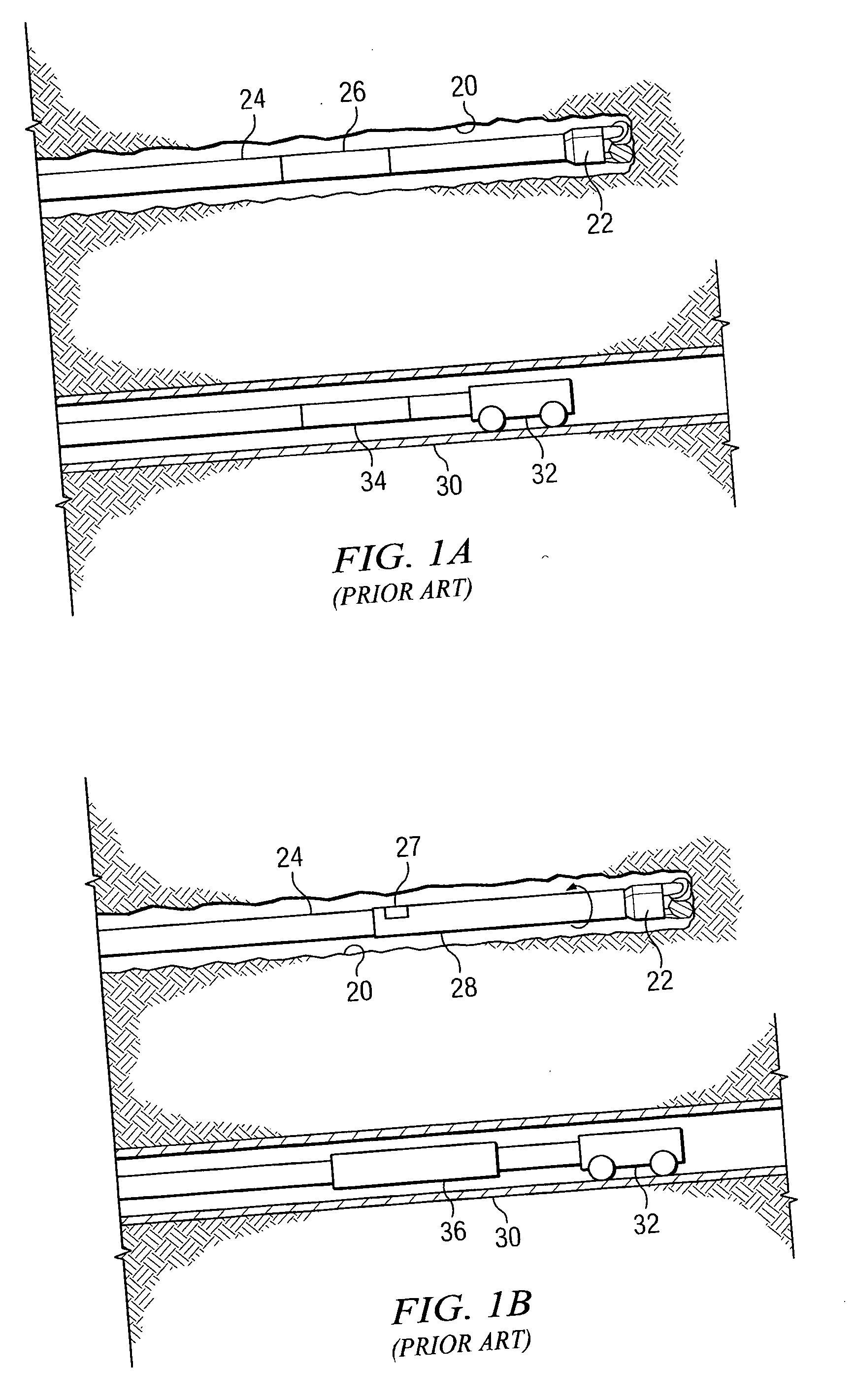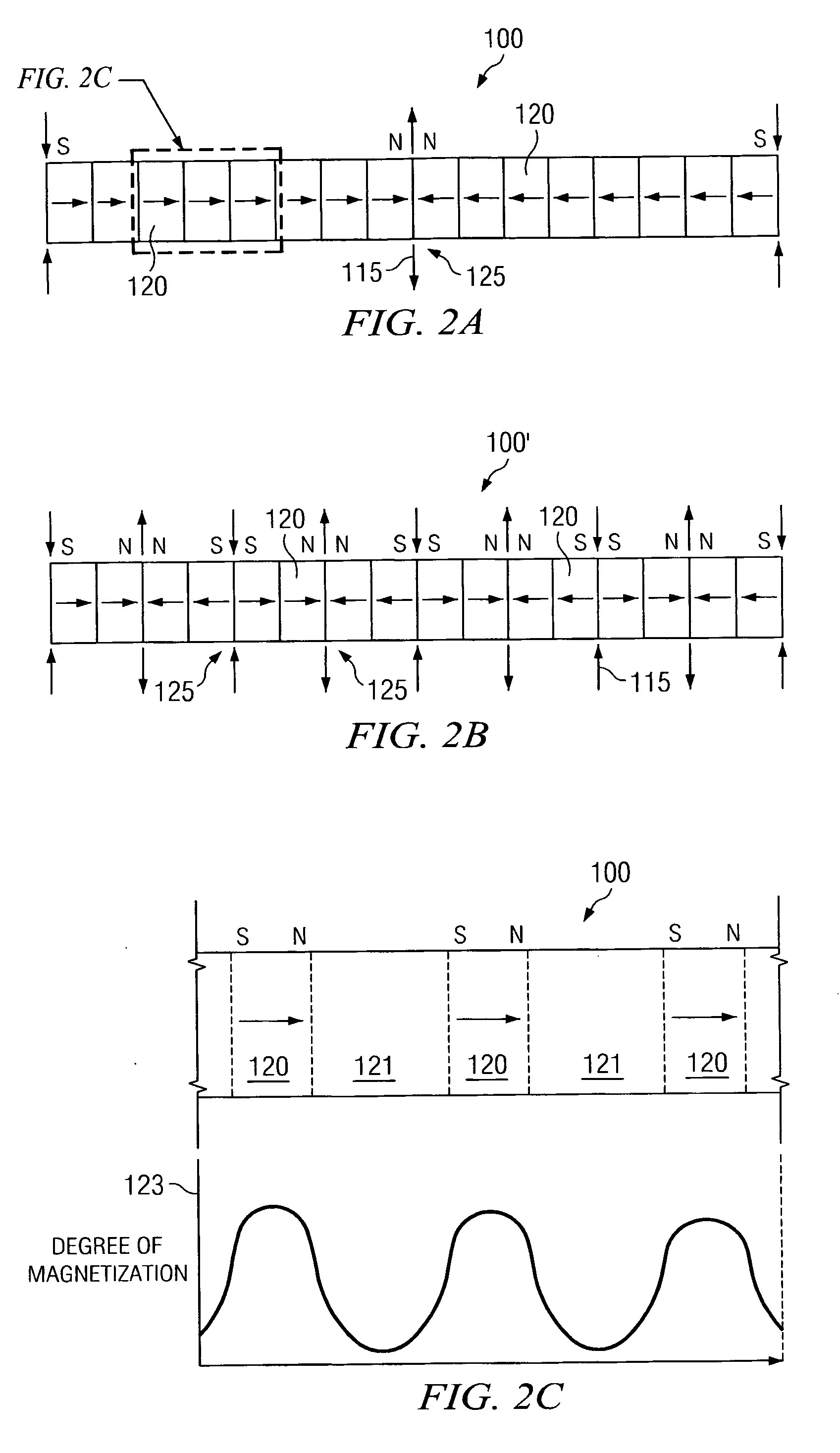Magnetization of target well casing strings tubulars for enhanced passive ranging
a casing string and tubular technology, applied in the field of subterranean borehole drilling and surveying, can solve the problems of inability to reliably detect remanent magnetic field, inability to accurately characterize remanent magnetic field, and inability to carefully control the magnetization used for magnetic particle inspection, etc., to achieve simple twinning operation, reduce the diameter, and reduce the effect of twinning
- Summary
- Abstract
- Description
- Claims
- Application Information
AI Technical Summary
Benefits of technology
Problems solved by technology
Method used
Image
Examples
Embodiment Construction
[0031]FIGS. 2A through 2C show schematic illustrations of wellbore tubulars 100 and 100′ magnetized according to exemplary embodiments of this invention. Tubulars 100 and 100′ include a plurality of discrete magnetized zones 120 (typically three or more). Each magnetized zone 120 may be thought of as a discrete cylindrical magnet having a north N pole on one longitudinal end thereof and a south S pole on an opposing longitudinal end thereof. Moreover, the tubulars 100 and 100′ are magnetized such that they include at least one pair of opposing north-north NN or south-south SS poles 125. Such opposing magnetic poles effectively focus magnetic flux outward from or inward towards the tubular as shown at 115 on FIGS. 2A and 2B. In the exemplary embodiment shown on FIG. 2A, tubular 100 includes 16 discrete magnetized zones 120 configured such that tubular 100 also includes a single pair of opposing NN poles 125 located at about the midpoint along the length thereof. Alternative embodimen...
PUM
 Login to View More
Login to View More Abstract
Description
Claims
Application Information
 Login to View More
Login to View More - R&D
- Intellectual Property
- Life Sciences
- Materials
- Tech Scout
- Unparalleled Data Quality
- Higher Quality Content
- 60% Fewer Hallucinations
Browse by: Latest US Patents, China's latest patents, Technical Efficacy Thesaurus, Application Domain, Technology Topic, Popular Technical Reports.
© 2025 PatSnap. All rights reserved.Legal|Privacy policy|Modern Slavery Act Transparency Statement|Sitemap|About US| Contact US: help@patsnap.com



